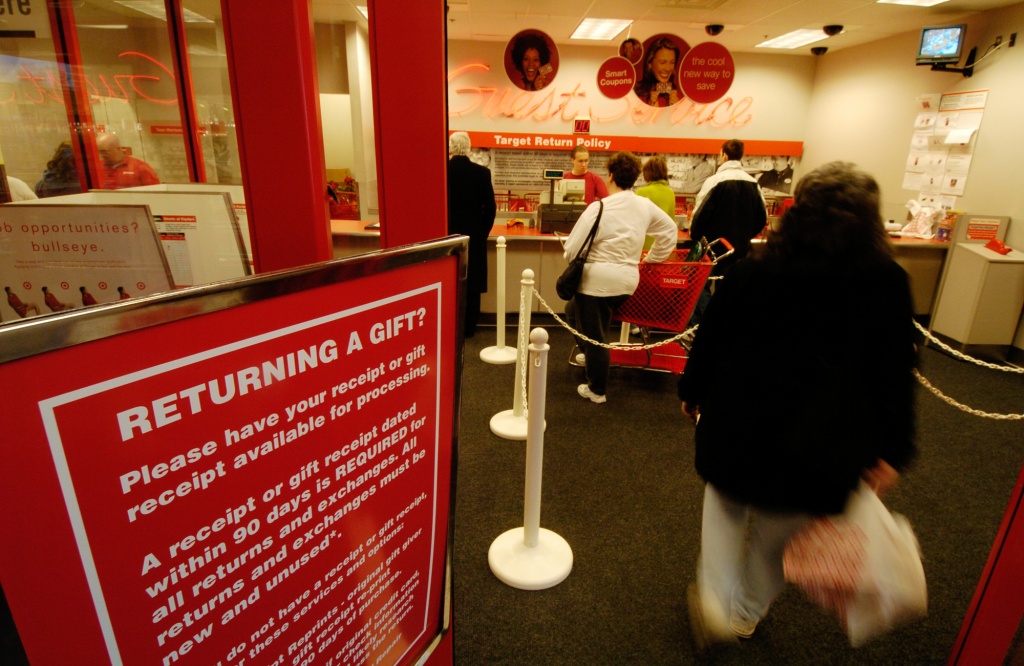Small Business
Wrong Size? Retailers on Track to See $743 Billion in Merchandise Returns for 2023
According to the report, for every $1 billion in sales, the average retailer incurs $145 million in merchandise returns. Online sales do see a higher return rate, with 17.6% or $247 billion of merchandise purchased online returned.
Dec. 27, 2023

Retailers have been focused on efforts to mitigate returns, as total returns for the industry amounted to $743 billion in merchandise in 2023, according to a report released today by the National Retail Federation and Appriss Retail. As a percentage of sales, the total return rate for 2023 was 14.5%.
According to the report, for every $1 billion in sales, the average retailer incurs $145 million in merchandise returns. Online sales do see a higher return rate, with 17.6% or $247 billion of merchandise purchased online returned. That compares with 10.02% for pure bricks-and-mortar returns (excluding online orders that are returned in-store), or $371 billion.
“Retailers continue to test and implement new ways to minimize losses from returns, particularly those that are fraudulent, while at the same time optimizing the shopping experience for their customers,” said NRF Executive Director of Research Mark Mathews. “Retailer’s efforts include providing greater detailed descriptions on sizing and fit of products for online purchases and requiring a receipt with returned items. As a whole, the industry is prioritizing efforts to reduce the amount of merchandise returned in stores and online.”
This year, return fraud contributed $101 billion in overall losses for retailers. Moreover, for every $100 in returned merchandise, retailers will lose $13.70 to return fraud.
As concerns around return fraud continue to grow, retailers are bolstering their efforts to mitigate the related losses. With increases in both in-store and digital traffic, many retailers are testing in-store policy changes and limiting the flexibility of online returns. Keeping customer satisfaction in mind, retailers are strengthening customer service operations through frictionless retail and a seamless end-to-end user experience.
Among the types of return fraud retailers say they have experienced in the past year, nearly half (49%) cited returns of used, non-defective merchandise, also known as wardrobing, and 44% cited the return of shoplifted or stolen merchandise. Over one-third (37%) said they experienced returns of merchandise purchased on fraudulent or stolen tender and one-fifth (20%) said they have experienced return fraud from organized retail crime groups.
“The continued growth of online channels has had a significant impact on retail sales and returns,” Appriss Retail CEO Michael Osborne said. “One example is our tracking of claims and appeasements, which is a new category in online returns that covers reports for missed, late or damaged deliveries, and is the fastest-growing category for return fraud.”
While the holiday season is one of the biggest sales periods of the year for retailers, they only expect a slight uptick in the return rate compared with the rest of the year. The study finds that $148 billion in holiday merchandise is expected to be returned at a rate of 15.4%. However, retailers anticipate nearly $25 billion in fraudulent returns, which represent 16.5% of total holiday returns. The holiday season, with increased foot traffic, can be exploited by those seeking to make fraudulent returns.
NRF has partnered with Appriss Retail to pair its customers’ returns data with NRF survey responses. Appriss Retail’s customers include 60 of the top 100 retailers in the United States and allow greater granularity in the data. Given the change in methodology, unless otherwise noted, 2023 numbers cannot be compared to the 2022 returns report.
Click here to view the 2023 returns results.
